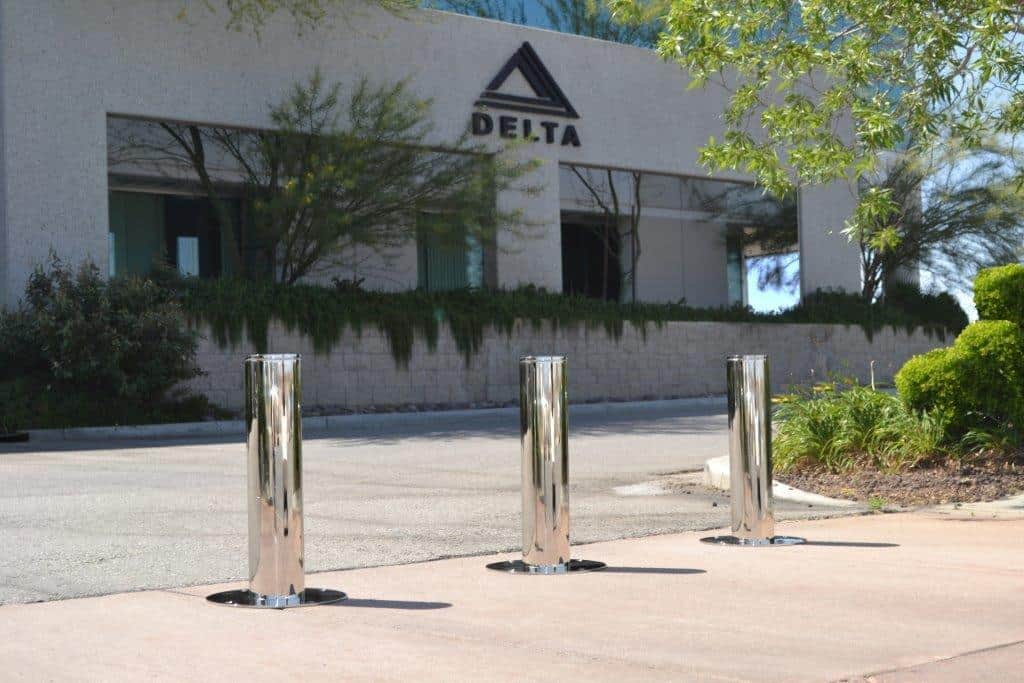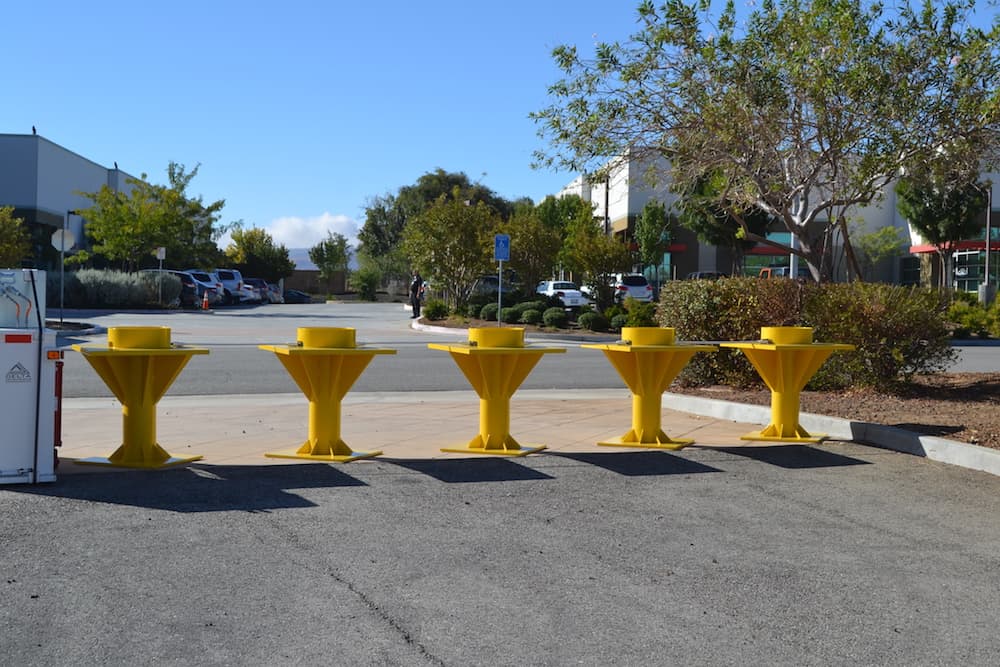Types of Bollards and Their Uses
Most people have probably seen bollards before but not known what they were called. Some people refer to them by a more generic term, such as “traffic barriers.” A bollard is a vertical post that is short and sturdy used for security to prevent vehicles from crashing into buildings or pedestrian areas. Learn about the different bollard types, their history, and their uses today to see how these security devices continue to protect buildings and pedestrians around the world.
What Types of Bollards Are in Use?
Thanks to the versatile design of these short, sturdy devices, there are not only many different bollard types but also many different uses. Most are used for safety purposes, particularly the following five common types used today.

1. Retractable Bollards
When an area needs to be secured for only part of the day, week, month, or year, a line of retractable bollards is an ideal solution. These powered barriers can be raised and lowered at will to control access to a particular area. One popular way these are used is to prevent traffic to restricted areas and only allow individuals with the correct security clearance to lower the bollards.
2. Removable Bollards
Similar to retractable types of bollards, removable bollards can be pulled out of their place and then returned. They’re popularly used to protect a specific parking space or employee-only access point. They can also be used in areas with seasonal traffic.
3. Flexible Bollards
Often seen along highways and road construction areas, flexible bollards are typically made of durable polyethylene. These visible, cost-effective bollard types are meant to direct traffic rather than prevent vehicles from traveling in a particular area. Flexible bollards typically can’t withstand a direct impact from a vehicle, so they aren’t considered a secure way to restrict an area from vehicle traffic.
4. Decorative Bollards
While still performing the key function of preventing vehicles from entering a particular area, decorative bollards also match the style of the surrounding buildings to create a seamless, professional look. These types of bollards can be ornamental only or can conceal a sturdy concrete or steel frame to protect buildings and pedestrians.
5. Crash-Rated Bollards
These bollard types are strategically designed to prevent a direct crash or ram. They’re often found in front of government buildings, banks, or areas of high pedestrian traffic where bad actors may choose to attempt to crash or ram into a restricted area.
How Were Bollards First Used?
The word appears to derive from “bole,” a Middle English term referring to the trunk of a tree, though today’s bollards are typically made of steel. The first recorded use of “bollard” in English was in the mid-1700s. However, types of bollards have existed in one form or another since the 1600s.
Originally, bollards were installed on wharves and quays to give sailors a place on which to tie up their boats and ships so they wouldn’t sail away. Sailors used the materials they had available for this purpose; they repurposed old cannons that were no longer useful by burying them muzzle-first in the ground. The heavy iron made a strong, sturdy post that would effectively hold even large vessels in place, and it was more resistant to the sand and damp air than wooden posts would have been. There are still maritime bollards used for this purpose, and even today, many types of bollards for traffic use still have a vaguely cannon-like shape.

When and Where Did Traffic Bollards First Emerge?
The first use of traffic bollards as we know them today seems to have been in the city of Amsterdam in the Netherlands in the early 1800s. Back then, the streets had no curbs to protect storefronts from wayward horse-drawn carriages. Since Amsterdam is a city built on the water, the shop owners were no doubt familiar with maritime bollards and thought they could be installed on land for the purpose of controlling traffic. Amsterdam’s traffic bollards became a prominent and popular symbol of the city. If you visit today, you can still see some of the historic bollards, but as the city installs elevated sidewalks, it is gradually removing them.
The first traffic bollards were merely wooden stakes partly buried in the ground strategically around storefronts. Since the vehicles they were meant to deter were horse-drawn carriages that were not very heavy, wooden posts were adequate to the task. However, as vehicles became heavier, wooden bollards were no longer strong enough and started to be replaced with sturdier material bollard types, such as cast iron.
What Are Bollards Used for?
DIfferent types of bollards have many possible uses. Delta Scientific bollards are typically used for one or more of the following purposes:
- Safety: Every day, there are up to 60 incidents of a vehicle crashing into a storefront. These low-impact crashes are usually accidental.
- Security: Sometimes bad actors crash vehicles into buildings or pedestrian areas on purpose. Sometimes these are “smash-and-grab” burglaries in which the criminals use the crash as a means of getting into the building. Though resulting in significant property damage, these smash-and-grab incidents usually happen after business hours and result in few injuries or deaths. More recently, terrorists have launched attacks against civilians by crashing large vehicles into buildings or designated pedestrian areas in a deliberate attempt to cause injuries.
- Pedestrian Guides: In addition to keeping pedestrians safe, bollards can also act as directional guides showing them where they are allowed to walk.
Our bollards are primarily intended for security and are built to withstand high-velocity vehicle attacks.
Learn About Modern Bollards Types and Their Uses
From basic bollard types to specialized protective bollards with decorative features, find the security devices you need from Delta Scientific Corporation. Contact us to learn more about the most common types of bollards and see how you can use them to protect buildings, guide traffic, and protect pedestrians. Find out which bollards can be used in your specific application and how our devices can offer the safety and security you need.
Sources:
https://thebusinessgossip.com/what-are-bollards/
https://www.merriam-webster.com/dictionary/bollard
Share This Story, Choose Your Platform!
